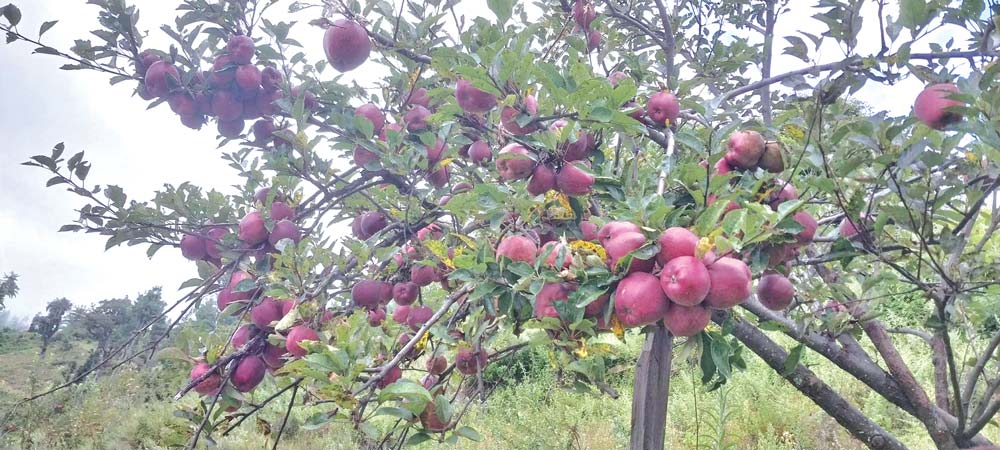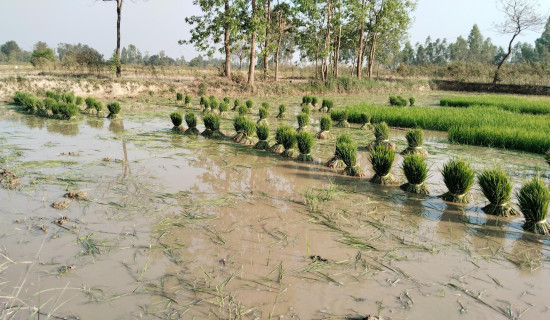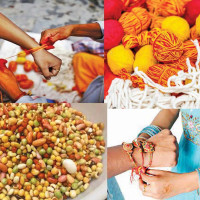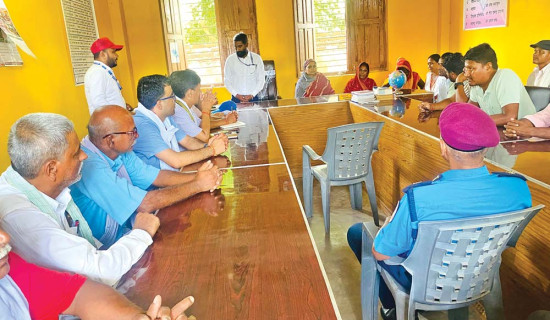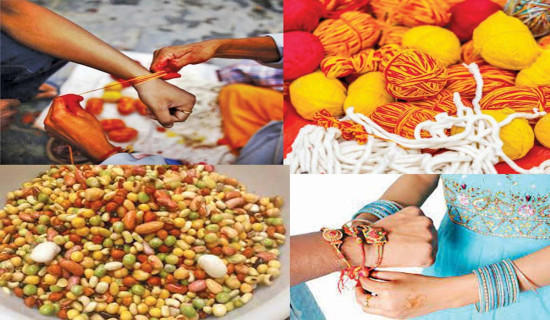- Saturday, 9 August 2025
Jumla sold agro products worth Rs. 690 million last FY
By Naurate Nepali
Sinja (Jumla), Aug. 9: Agricultural produce worth millions of rupees has been supplied to other districts from Jumla, a Himalayan district in Karnali Province.
With the increase in supply from the district, local agricultural produce has started fetching good prices. Due to this, the living standards of the farmers has also improved.
In the last fiscal year 2024/25, about 23,000 tonnes of agricultural produce worth over Rs. 690 million was supplied from the district.
Apple is the most supplied agricultural produce. After apples, indigenous agricultural products, including marsi rice, walnuts, beans, and millet are the main ones, said Ram Bhakta Adhikari, chief of the Agricultural Development Office, Jumla.
Every year, farmers in Jumla earns millions of rupees by supplying agricultural goods to other districts. This has had a positive impact on the local economy.
Adhikari said that the trade of agricultural produce is becoming easier with the expansion of market access, communication facilities, and road network. However, storage facilities, processing centres, and price stability still remain a challenge, he added.
Despite the increasing demand for agricultural produce grown in Jumla in the national and international markets, production has been decreasing year by year.
According to the data of the Agricultural Development Office, apples worth Rs. 666.1 million were supplied from Jumla in 2024/25.
Although the total production was over 21,000 tonnes, only 9,331 tonnes of apples were supplied.
Apple production, which is linked to the economic prosperity of Jumla and the livelihood of farmers, is increasing.
Adhikari said that 21,270 tonnes of apples were produced in 2024/25, the highest in four years.
According to him, Jumla has earned Rs. 610 million by supplying apple alone last fiscal year. Around 19,840 tonnes of apple was produced in Jumla in the fiscal year 2023/24, around 18,000 tonnes in 2022/23 and 16,000 tonnes in 2021/22.
Similarly, 2,590 kg of walnuts, 55,809 kg of beans, 2,913 kg of soybeans, and 90,660 kg of potatoes were supplied.
Likewise, 11,555 kg of marsi rice, 950 kg of chino rice, 790 kg of kaguno rice, 6,150 kg of buckwheat flour, 16,400 kg of millet flour, and 10,450 kg of barley flour were supplied from Jumla last year.
Among flour products, millet flour seems to be the most supplied. Millet is being cultivated on 2,740 hectares of land in Jumla. Last year, around 3,850 tonnes of millet was produced in the district.
The productivity rate of millet in Jumla is higher than that of the entire country and Karnali Province.
While the productivity of millet per hectare in Nepal is 1.34 tonnes, it is 1.12 tonnes per hectare in Karnali while in Jumla it is 1.41 tonnes, the highest production rate across Nepal.
Most of the agricultural products grown in Jumla are consumed within the district. After the expansion of the road, white rice has entered the market, and grains which used to be stored in home previously have started reaching the market.
In recent years, rice production has declined more than other crops. In the devastating floods of 2022, 18 hectares of fields where marsi paddy was planted were damaged, and since then rice production has decreased in Jumla.
It is necessary to pay attention to utilising the 18 hectares of land that was destroyed by the floods in 2022. Otherwise, rice production will decrease more than other crops.
According to Agricultural Development Office Jumla, around 24,231 tonnes of indigenous crops were produced in Jumla in the fiscal year 2024/25. Of which, 23,000 tonnes were supplied.
The food crops production has decreased by around 8,000 tonnes in the last fiscal year as compared to previous fiscal year. Around 32,845 tonnes of food crops were produced in the district in 2023/24. Similarly, around 30,828 tonnes of food crops were produced in 2022/23. However, in the fiscal year 2021/22, only 15,000 tonnes of food crops were produced in the district.
Although the production situation has fluctuated over the past four years, last year's production was the lowest in three years.

